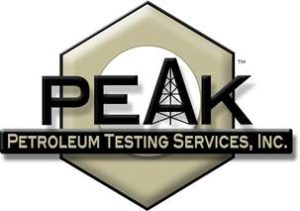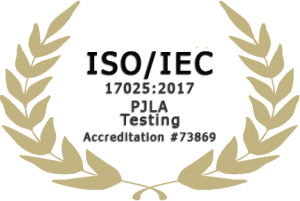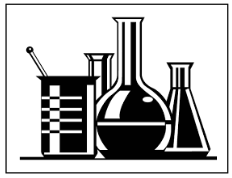
Diesel fuel is important, and testing your diesel fuel is crucial. Generator fuel can be equally as valuable as the generator itself. You can conduct cursory testing by doing sensory checks (Does it look ok? Is there any sediment, dirt, or anything visible?), but further knowledge of the fuel’s condition is requires more substantive testing.
Companies that store fuel need to know whether fuel still meets specifications and will still work properly when needed. In other words, they use diesel fuel testing to determine the combustion quality and stability of the fuel. Our testing program adheres to the requirements of NFPA 110
WHY YOU NEED GENERATOR DIESEL TESTING
Diesel fuels can be contaminated through the introduction of water, other fuels, microbes, and particulates like rust, dirt or sediment.
Within your fuel tank, the thermal expansion occurring when fuel heats and cools can cause condensation to form. Condensation adds water to fuel, which provides a medium for algae to grow. Algae feeds on the water and can grow exponentially. Diesel fuel additives may be used should water contaminate a full system.
Biodiesel fuel is composed of FAME (fatty acid methyl esters) which retain more water than refined diesel fuel.
Generators located in tropical areas may also be more susceptible to becoming tainted due to higher humidity in these regions. The moisture in the air and variations in temperature create the ideal environment for condensation and contamination to occur. When fuel isn’t filtered often, it can build up to dangerous levels.
Using contaminated fuel must be avoided because of the numerous problems that may occur. Water coming in contact with injection pumps and injectors can irreparably damage the fuel injection system. If that happens, internal parts would need to be disassembled and repaired or replaced. This could cost up to tens of thousands of dollars, depending on the scope and size of the generator.
Water in fuel tanks can also threaten the function of the engine. Performing generator diesel testing annually can ensure that the fuel is continually suitable for use or not.
PREVENTING CONTAMINATION
Regular fuel maintenance programs that detect levels of water measure the overall quality are the best way to prevent any issues with your diesel fuel. One way to maintain low levels of contamination is to consistently remove water from fuel tanks, as this can prevent the growth of yeast and bacteria.
Of course, generator diesel testing is an essential part of any fuel maintenance regimen. Testing allows you to identify microbial contamination and other problems at its earlier stages, allowing you to take early action. This will protect your generator performance and save you money in the long run.
If contamination is dangerously high, specialist fuel cleansers and biocides can be used. This is a costly process, as advanced treatment of contaminated fuel and generators can cost many thousands of dollars while taking your equipment out of commission.
The best way to prevent microbial contamination is to ensure there is no moisture within the fuel as well as dry the fuel by circulating across specialized filtration.
TYPES OF GENERATOR DIESEL TESTING
Oxidative Stability
Testing for oxidative stability in fuel from diesel engines provides insight to longterm storage stability. Oxidative stability testing is a predictive test that measures sludge formation and varnish development when fuel is exposed to accelerated stability conditions.
Poor ox stab values indicate the fuel may not be suitable to use after storing in a tank for longer periods of time.
Sediment and Water Levels
Especially in critical facilities, including many healthcare locations, testing for sediment and water content in diesel fuel is required. High levels of water or sediment prevent equipment from working properly, which can have massive ramifications.
Sulfur Content
Regulations now require many diesel fuels to have sulfur content below 15 ppm, making this test essential for liability purposes. Generator diesel testing can prevent any issues if fuel is spot-checked for sulfur. EPA on site audits may perform immediate sulfur analysis to ensure compliance, and fines for out-of-tolerance sulfur amounts are substantial.
Cetane Rating
Similar to gasoline’s octane rating, cetane rating measures diesel fuel combustion quality. Cetane rating can decline over time as fuel is stored. The presence of negative environmental conditions, water sediment, large temperature changes and microbes, can hasten this decline.
Fuels with insufficient cetane rating will not lead to efficient function of engine startup and operation. Even if the engine is able to run, it will not run smoothly. The look and smell of fuel will not be adequate to determine its cetane rating, so lab testing is the only way to know for certain.
CLEANING AFTER GENERATOR DIESEL TESTING
It may be necessary to “polish” the fuel should the lab analysis finds out-of-tolerance fuel specification. Regular and spot filtration may provide immediate improvement.
OUR GENERATOR DIESEL TESTING
At Peak Petroleum Testing Services, we’ve provided comprehensive and high-quality testing for our customers since our start in 2001. We follow all specifications from the United States Environmental Protection Agency and can make recommendations for your diesel fuel depending on your needs.
Having a trusted provider test your diesel fuel will give you the confidence that your equipment has the fuel it needs to work properly. American Society of Testing and Materials (ASTM) list the methodology to prove compliance towards specifications developed by the producers, consumer, and testing labs around the world.
Contact us to speak with an expert about your diesel fuel!
Related keywords: crude oil, emission control, internal combustion engine, engine fuel, ignition diesel, compression ignition, spark ignition, distillate fuel, particulate filter




